Also known as Bac De Temple or Quang Dong Provincial Assembly Hall, the temple is located on Pham Hong Thai Street in My Long Ward, Long Xuyen City, An Giang Province. Its main facade faces the Long Xuyen River.
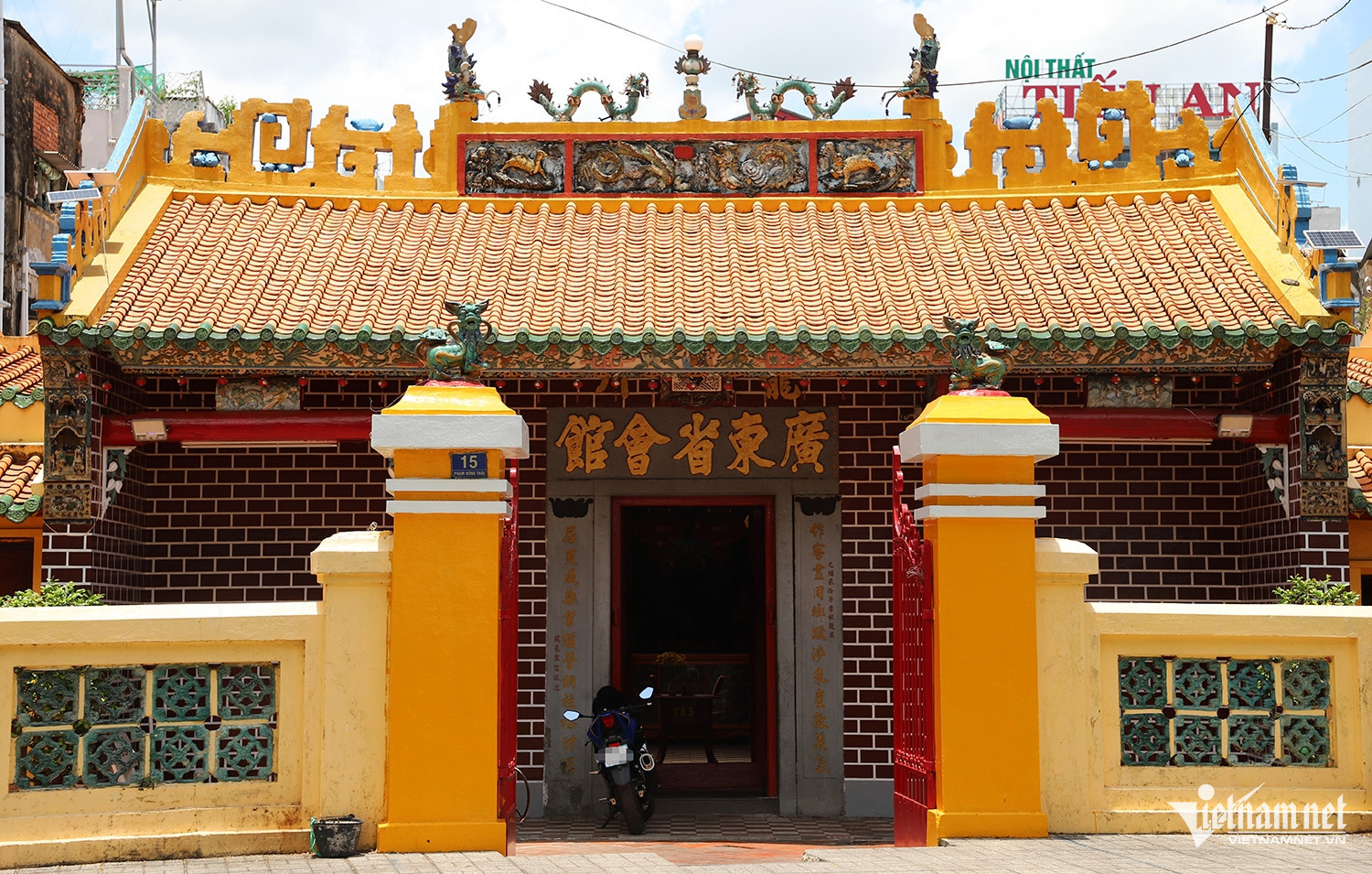
As documented by the An Giang Museum of History, this temple was established by Chinese immigrants from Guangdong province, China, who settled in the region. They contributed jointly to build this assembly hall as a symbol of unity and shared heritage.
Constructed over a century ago, the temple has undergone multiple renovations and restorations. However, it has remarkably preserved its original features, from stone pillars and beams to precious relics housed inside.
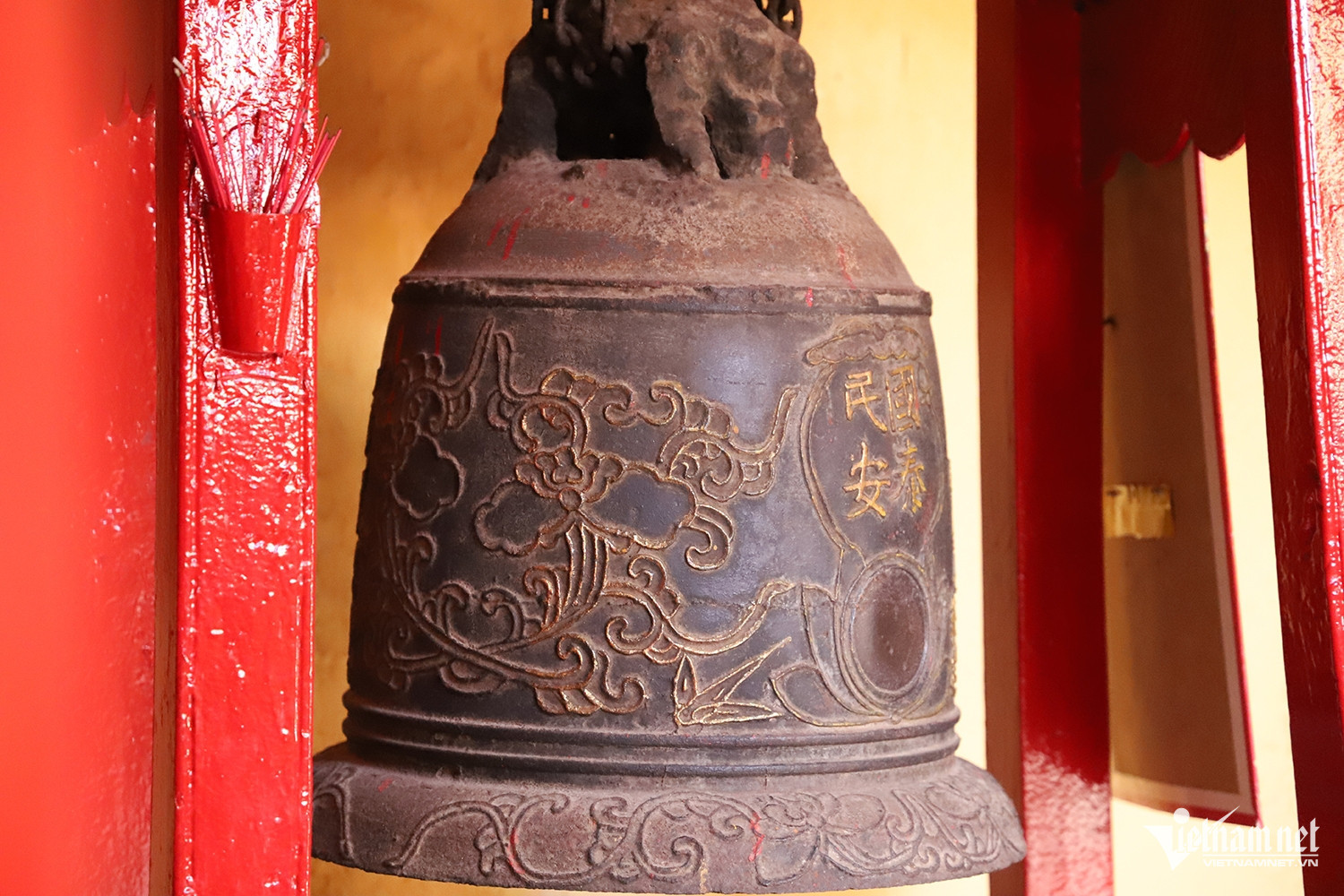
Covering an area of around 400 square meters, the temple is designed in the traditional “quốc” (enclosure) architectural style, with interconnected structures forming a square layout.
The roof is covered with green-glazed tube tiles, and its ridge is adorned with intricate carvings of dragons, elephants, and phoenixes, along with ancient bas-reliefs and ornamental motifs.
Upon entering the front hall, visitors encounter elaborately carved wooden doors and twin covered walkways running parallel on both sides.
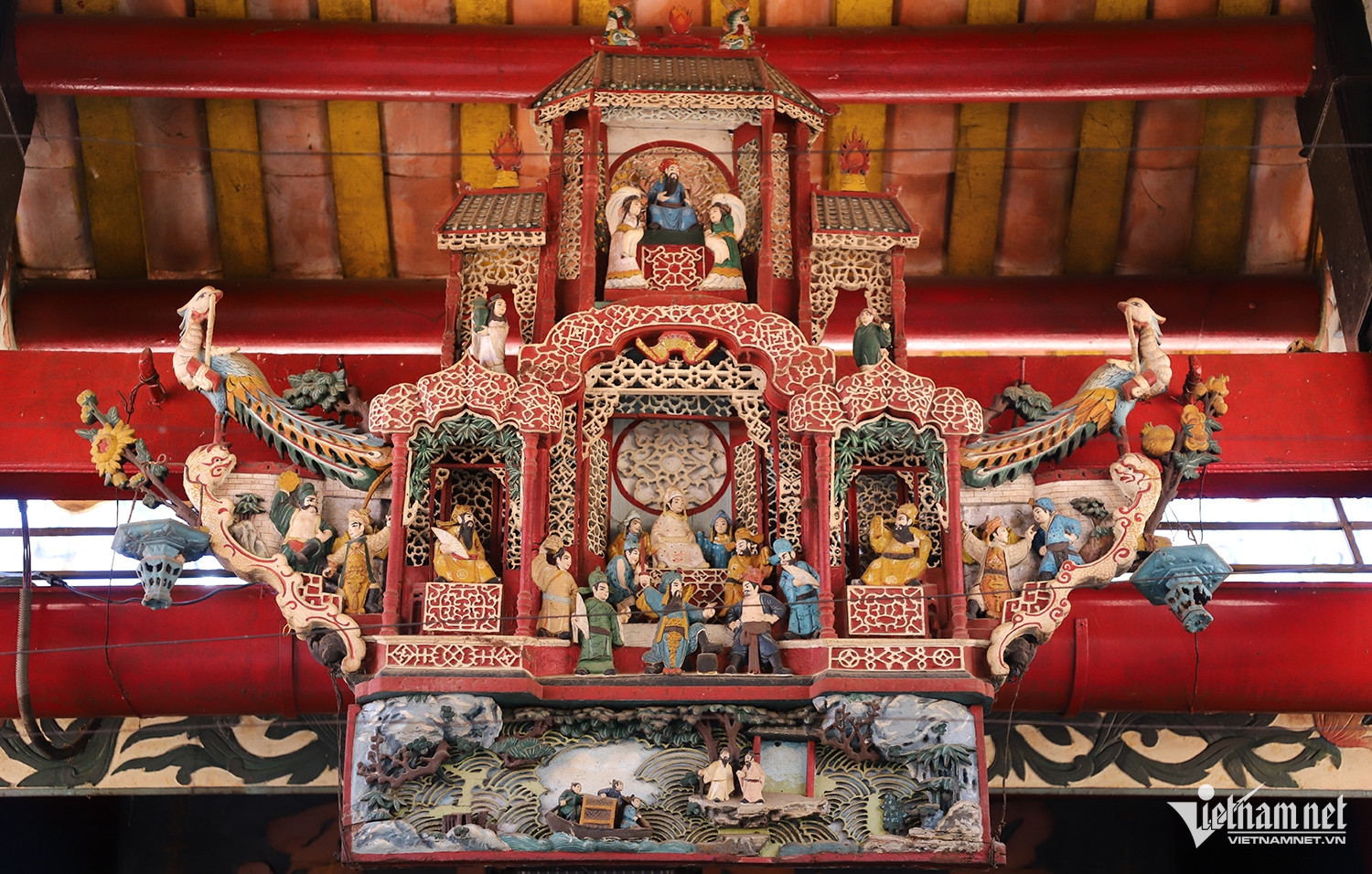
The temple’s structural frame is made entirely of precious hardwoods. The complex rafter system supports a vaulted roof held up by red-lacquered round pillars with stone bases carved from single blocks.
The front hall is dedicated to Buddha Shakyamuni, the Bodhisattva Guanyin, and Kṣitigarbha. The main sanctuary at the back houses the statue of Bac De (the Northern Emperor), about 0.7 meters tall in a commanding seated pose. To the left is an altar to Mazu (Thien Hau), and to the right, an altar to Guan Yu (Quan Cong).
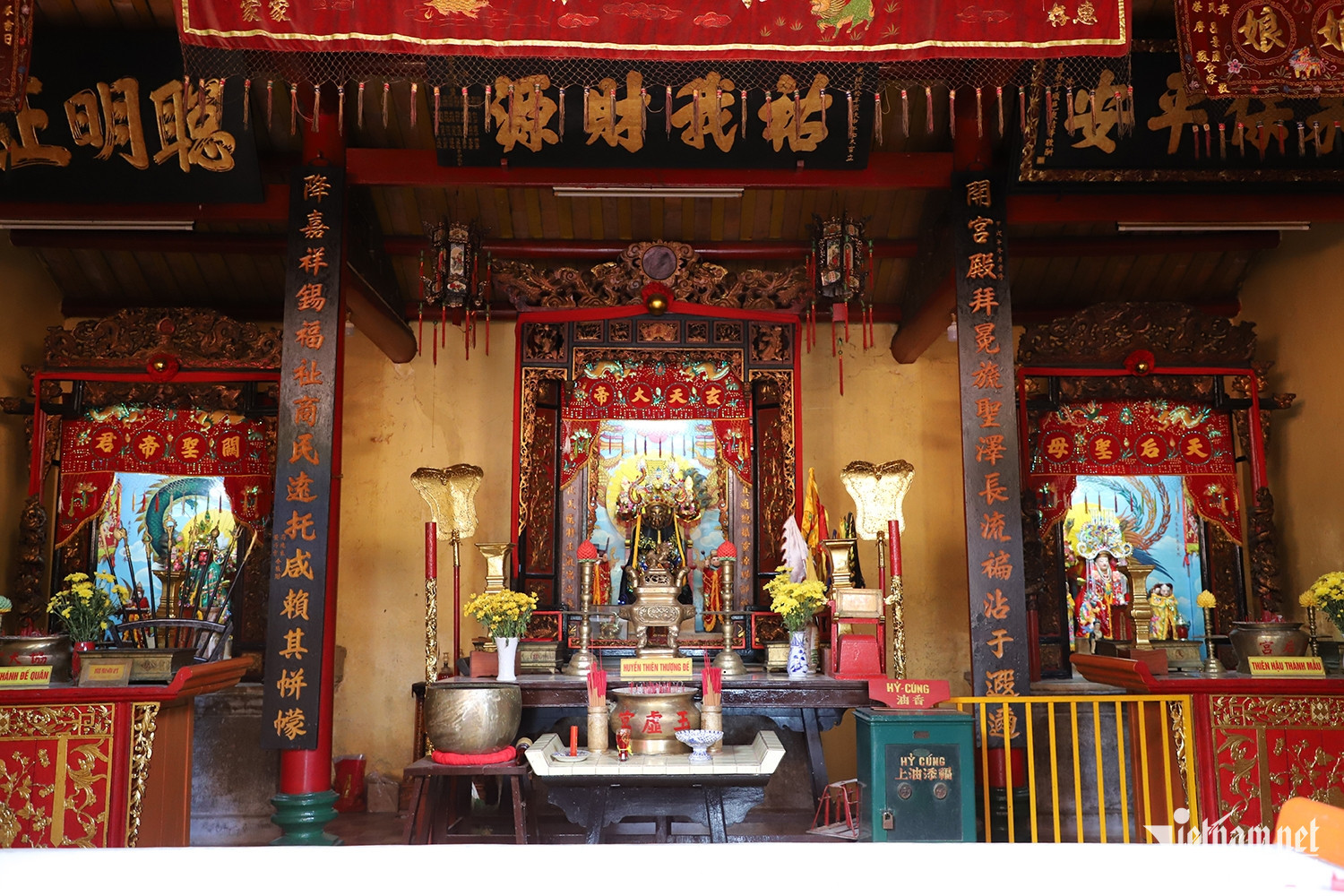
Among the temple’s highlights are exquisite relief panels and decorative calligraphy boards portraying dragons, phoenixes, and carps transforming into dragons.
Additionally, there are three stone steles recording the names of donors who contributed to the temple’s construction and restoration - important resources for linguists and Han-Nom script scholars.
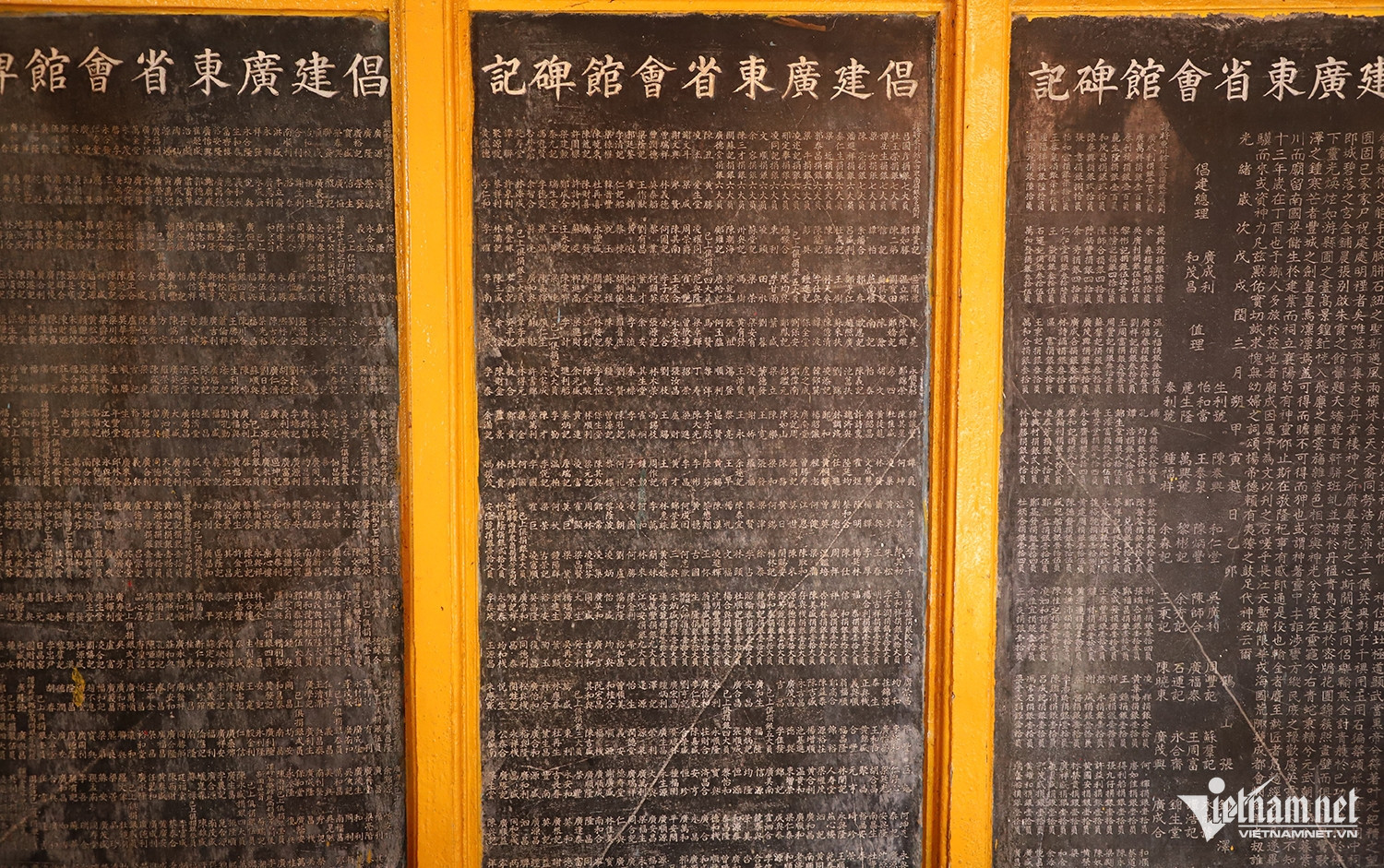
The temple holds ceremonies on the 15th and last days of each lunar month. Major annual festivals include the First Full Moon (15th of the first lunar month), Ullambana Festival (15th of the seventh lunar month), and the Mid-Autumn Festival (15th of the tenth lunar month).
Notably, the third day of the third lunar month is dedicated to Bac De, the 23rd to Mazu, and the 24th of the sixth month to Guan Yu.
Recognized for its architectural and artistic value, Ong Bac Temple was designated a National Historic and Cultural Monument in 1987.
Tran Tuyen